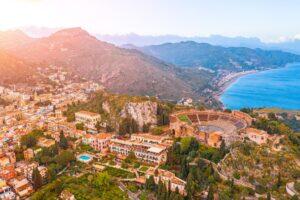Fodor's Expert Review Oratorio del Rosario di San Domenico
Despite its grand facade and airy interior, the church of San Domenico itself holds little interest for anyone who isn’t excited by the tombs of Sicilian notables, but the eponymous oratory, located behind the church, constitutes one of Palermo’s great unsung treasures. The private chapel is generously adorned with sumptuous, creamy white stuccos, exquisitely crafted by Giacomo Serpotta (1656–1732) and depicting figures representing Patience, Obedience, Humility, Liberty, Justice, and more. Unusually, these allegorical figures take the form of elegant society ladies—something which would never have been possible in a public place of worship like a church. A QR code shown at the ticket office will allow you to download an app that provides background information on what you're looking at, such as the numerous symbols incorporated into each of the sculptures, including the gold-colored lizard on Fortitude’s column, a puny reference to the artist himself, whose name resembles... READ MORE
Despite its grand facade and airy interior, the church of San Domenico itself holds little interest for anyone who isn’t excited by the tombs of Sicilian notables, but the eponymous oratory, located behind the church, constitutes one of Palermo’s great unsung treasures. The private chapel is generously adorned with sumptuous, creamy white stuccos, exquisitely crafted by Giacomo Serpotta (1656–1732) and depicting figures representing Patience, Obedience, Humility, Liberty, Justice, and more. Unusually, these allegorical figures take the form of elegant society ladies—something which would never have been possible in a public place of worship like a church. A QR code shown at the ticket office will allow you to download an app that provides background information on what you're looking at, such as the numerous symbols incorporated into each of the sculptures, including the gold-colored lizard on Fortitude’s column, a puny reference to the artist himself, whose name resembles the Sicilian dialect word for “lizard.” Around the allegorical figures cavort a host of playful putti (cherubs), some of them playing musical instruments, while the 1628 painting above the altarpiece, Madonna and Saints, is the work of Anthony van Dyck.
READ LESS








